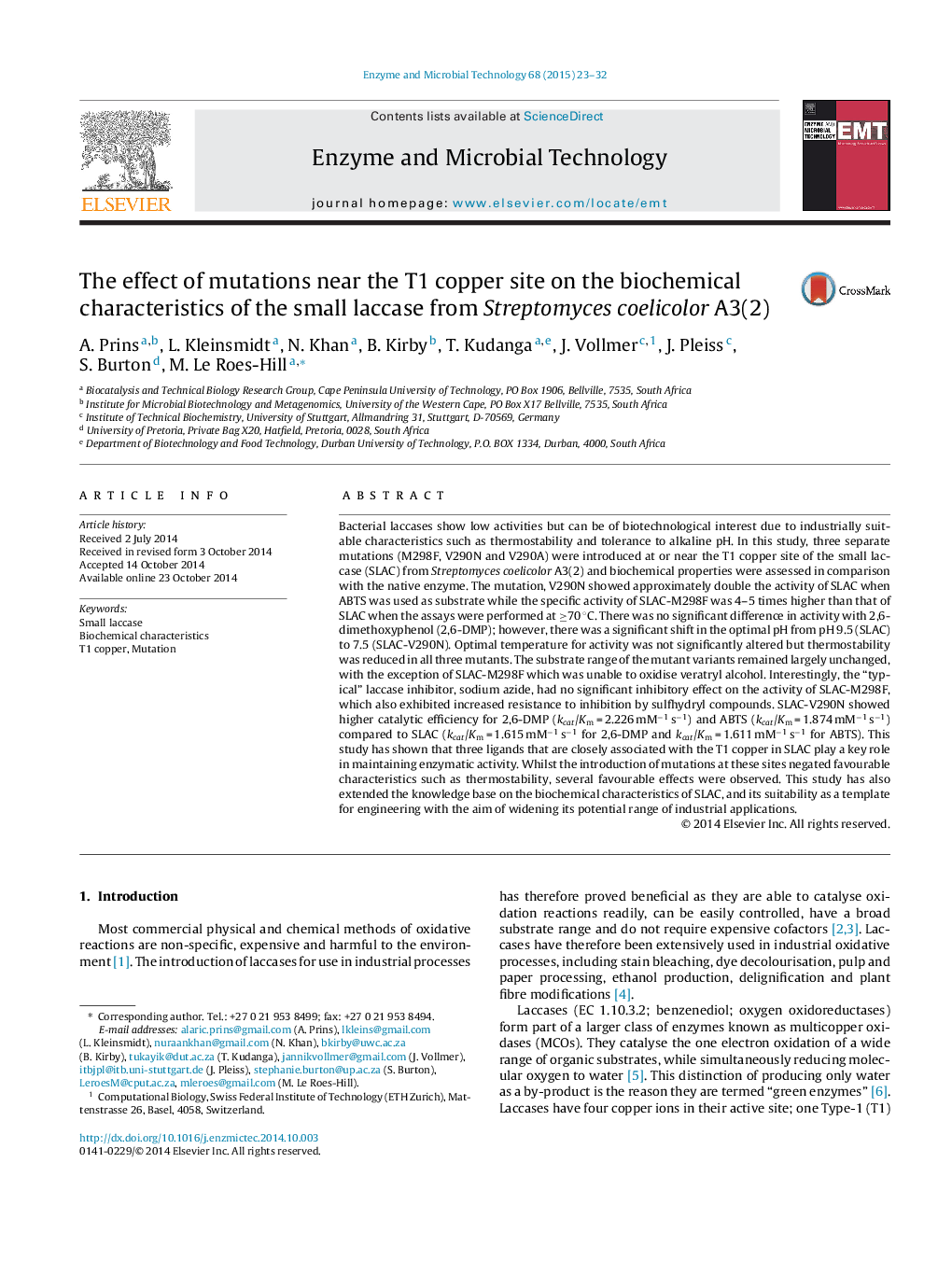| کد مقاله | کد نشریه | سال انتشار | مقاله انگلیسی | نسخه تمام متن |
|---|---|---|---|---|
| 16965 | 42627 | 2015 | 10 صفحه PDF | دانلود رایگان |

• Mutations around the T1 Cu of SLAC caused significant biochemical changes.
• The pH and temperature profiles of SLAC were altered.
• All mutations caused a significant decrease in the thermostability of SLAC.
• Increased capacity for diphenol oxidation was observed for selected variants.
• An axial methionine is essential for thermostability and substrate binding.
Bacterial laccases show low activities but can be of biotechnological interest due to industrially suitable characteristics such as thermostability and tolerance to alkaline pH. In this study, three separate mutations (M298F, V290N and V290A) were introduced at or near the T1 copper site of the small laccase (SLAC) from Streptomyces coelicolor A3(2) and biochemical properties were assessed in comparison with the native enzyme. The mutation, V290N showed approximately double the activity of SLAC when ABTS was used as substrate while the specific activity of SLAC-M298F was 4–5 times higher than that of SLAC when the assays were performed at ≥70 °C. There was no significant difference in activity with 2,6-dimethoxyphenol (2,6-DMP); however, there was a significant shift in the optimal pH from pH 9.5 (SLAC) to 7.5 (SLAC-V290N). Optimal temperature for activity was not significantly altered but thermostability was reduced in all three mutants. The substrate range of the mutant variants remained largely unchanged, with the exception of SLAC-M298F which was unable to oxidise veratryl alcohol. Interestingly, the “typical” laccase inhibitor, sodium azide, had no significant inhibitory effect on the activity of SLAC-M298F, which also exhibited increased resistance to inhibition by sulfhydryl compounds. SLAC-V290N showed higher catalytic efficiency for 2,6-DMP (kcat/Km = 2.226 mM−1 s−1) and ABTS (kcat/Km = 1.874 mM−1 s−1) compared to SLAC (kcat/Km = 1.615 mM−1 s−1 for 2,6-DMP and kcat/Km = 1.611 mM−1 s−1 for ABTS). This study has shown that three ligands that are closely associated with the T1 copper in SLAC play a key role in maintaining enzymatic activity. Whilst the introduction of mutations at these sites negated favourable characteristics such as thermostability, several favourable effects were observed. This study has also extended the knowledge base on the biochemical characteristics of SLAC, and its suitability as a template for engineering with the aim of widening its potential range of industrial applications.
Journal: Enzyme and Microbial Technology - Volume 68, January 2015, Pages 23–32